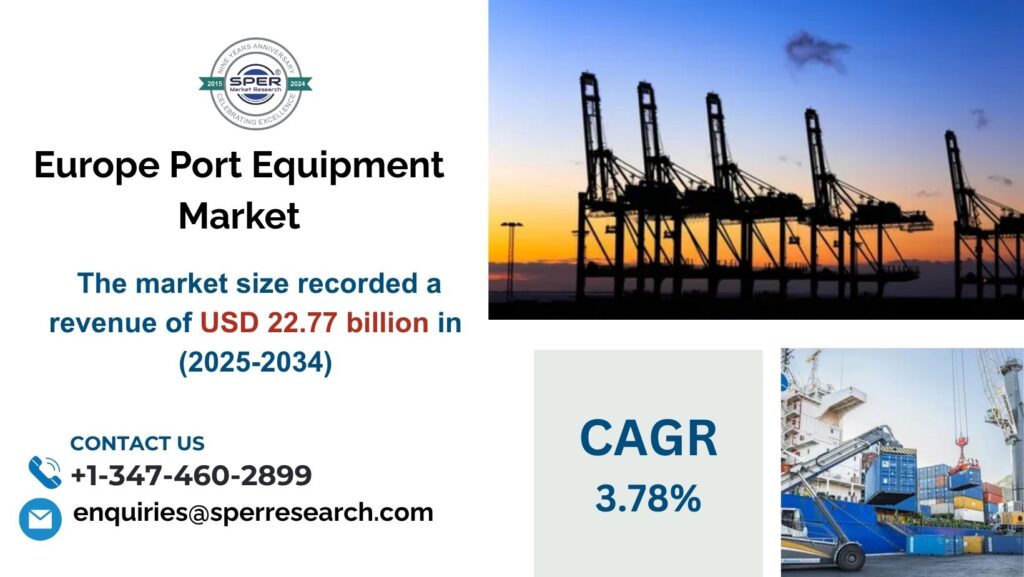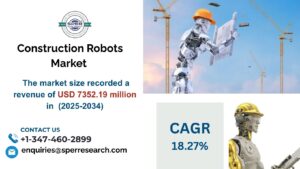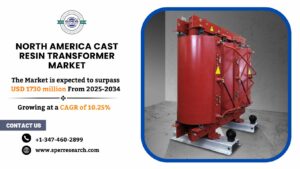Europe Port Equipment Market Trends and Forecast 2034

Port equipment refers to the machinery, vehicles, and systems used in ports, harbors, and terminals to safely and efficiently handle, transfer, and organize goods, containers, or commodities. Cranes, forklifts, reach stackers, automated guided vehicles, terminal tractors, and bulk material handling systems are all essential pieces of equipment designed to precisely lift, carry, or stack huge items. Modern port equipment increasingly includes automation, digital monitoring, and IoT-enabled technology to improve operating efficiency, eliminate human error, and protect staff. Proper use of port equipment maximizes space, simplifies material transportation, and improves coordination among storage rooms, trucks, and loading zones. Overall, port equipment is required for safe, efficient, and structured material handling, which improves workflow and operational reliability.
According to SPER Market Research, ‘Europe Port Equipment Market Size- By Equipment, By Operation Mode, By Power Source, By Application – Regional Outlook, Competitive Strategies and Segment Forecast to 2034’ states that the Europe Port Equipment Market is predicted to reach 22.77 billion by 2034 with a CAGR of 3.78%.
DRIVERS:
The European Port Equipment Market is being driven by increased emphasis on operational efficiency and technical innovation. Increased use of automation and smart systems, such as automated cranes, guided vehicles, and digital monitoring platforms, improves precision while decreasing human error. Environmental concerns and stricter emission laws drive the development of energy-efficient, low-emission technology, hence encouraging sustainability. Investments in improving port infrastructure and upgrading current gear create a need for sophisticated solutions. Safety concerns and the need to reduce downtime drive the inclusion of predictive maintenance and collision prevention systems. Collaborations between equipment makers and port operators also promote innovation, which leads to greater performance and dependability. Efficiency, safety, sustainability, and technical innovation all contribute to the rapid growth and modernization of port equipment in Europe.
Request a Free Sample Report https://www.sperresearch.com/report-store/europe-port-equipment-market?sample=1
RESTRAINTS:
The Port Equipment Market in Europe confronts a number of obstacles. Adoption is constrained by the high capital investment needed for sophisticated automation and machinery, particularly for smaller terminals. Strict adherence to safety and environmental regulations raises operational complexity and costs. Other challenges include the lack of skilled workers and the requirement for specific training to operate complex machinery. It can be difficult and time-consuming to integrate digital technologies with legacy systems that are already in place. Manufacturing and delivery schedules are impacted by supply chain interruptions and growing raw material costs. Furthermore, market uncertainties brought on by geopolitical tensions and shifting trade volumes make long-term planning and investment decisions more difficult for equipment makers and port operators.
Germany leads the European port equipment market due to its advanced engineering, strong manufacturing base, and focus on automation and sustainable solutions. Doosan Infracore, Hyster-Yale Materials Handling, Hyundai Construction Equipment, Kalmar (Cargotec), Konecranes, Liebherr, SANY, Svetruck, Terex Port Solutions, ZPMC are some of the major market players.
For More Information, refer to below link: –
Europe Port Equipment Market Share
Related Reports:
Follow Us –
LinkedIn | Instagram | Facebook | Twitter
Contact Us:
Sara Lopes, Business Consultant — USA
SPER Market Research
enquiries@sperresearch.com
+1–347–460–2899





